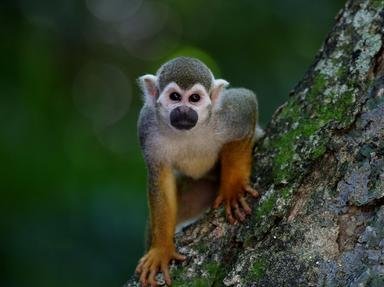Quiz Answer Key and Fun Facts
1. Which of the following is the preferred habitat of orangutans?
2. Orangutans can only be found living on two islands. Which ones?
3. In which of the following ways does the orangutan differ from other great apes?
4. Which body feature is used by a male orangutan to attract females during mating?
5. Which of the following is an orangutan's favorite food?
6. Orangutans are not tool users.
7. Which orangutans are generally the largest in a population?
8. On the average, how often do female orangutans have babies?
9. Which of the following has studied orangutans in the wild?
10. A new species of orangutan was identified in November 2017.
Source: Author
ponycargirl
This quiz was reviewed by FunTrivia editor
guitargoddess before going online.
Any errors found in FunTrivia content are routinely corrected through our feedback system.
